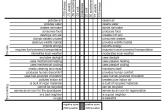CLIMATE SCOUT
CLIMATE SCOUT helps its users design buildings that uniquely respond to a site by providing climate-specific design advice at the building scale. It pairs the Köppen-Geiger climate classification and building design strategies from Architecture 2030’s Palette.
How to use CLIMATE SCOUT




















